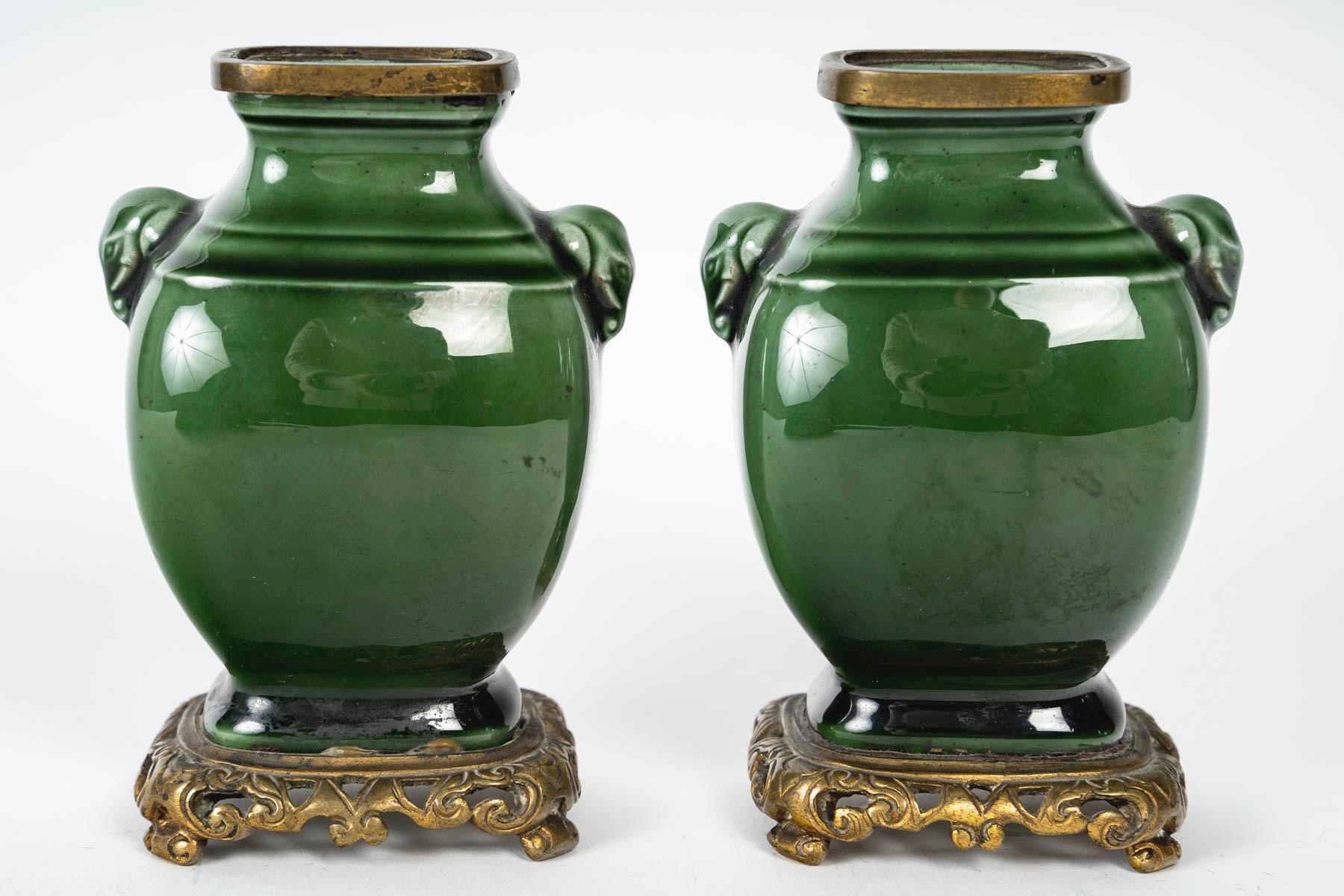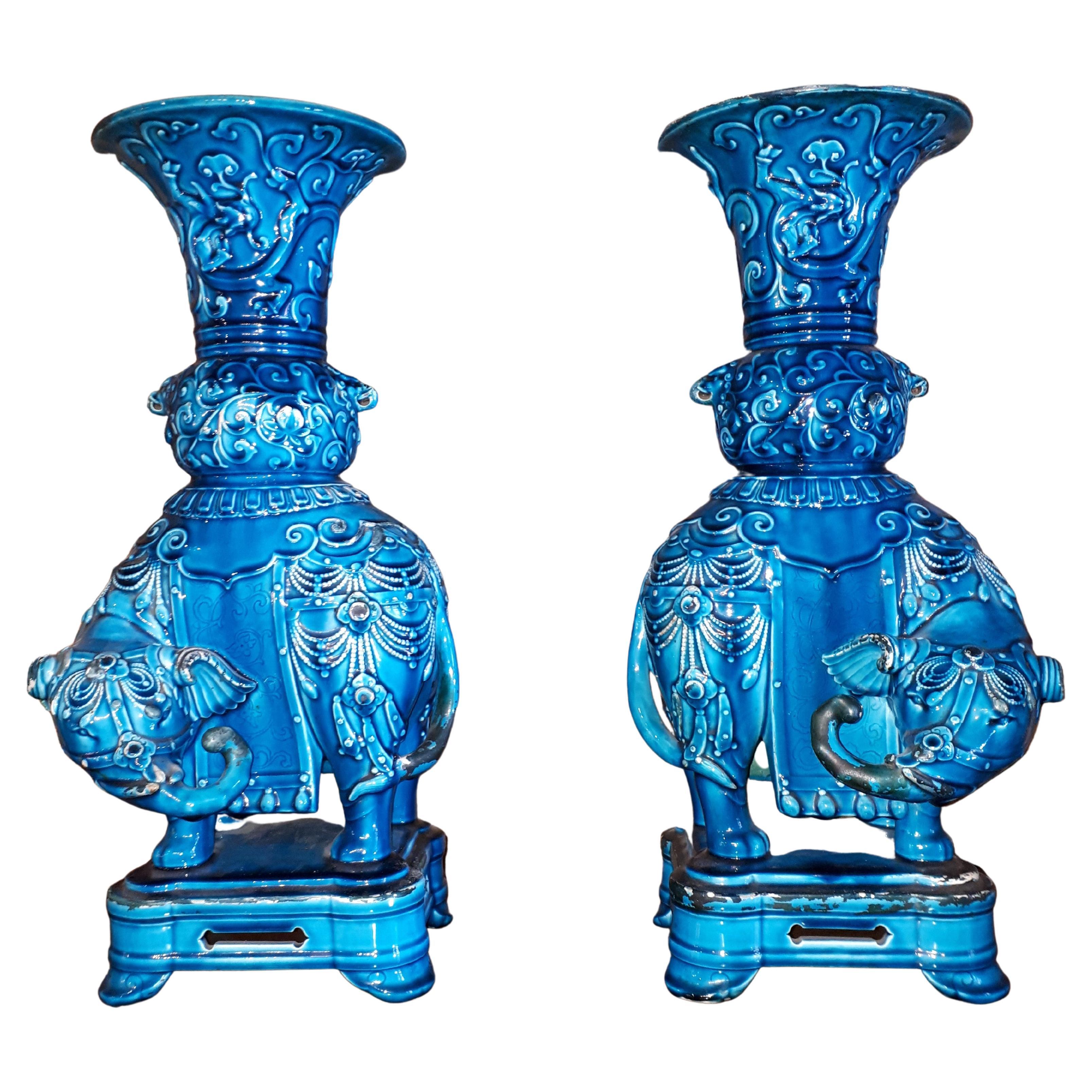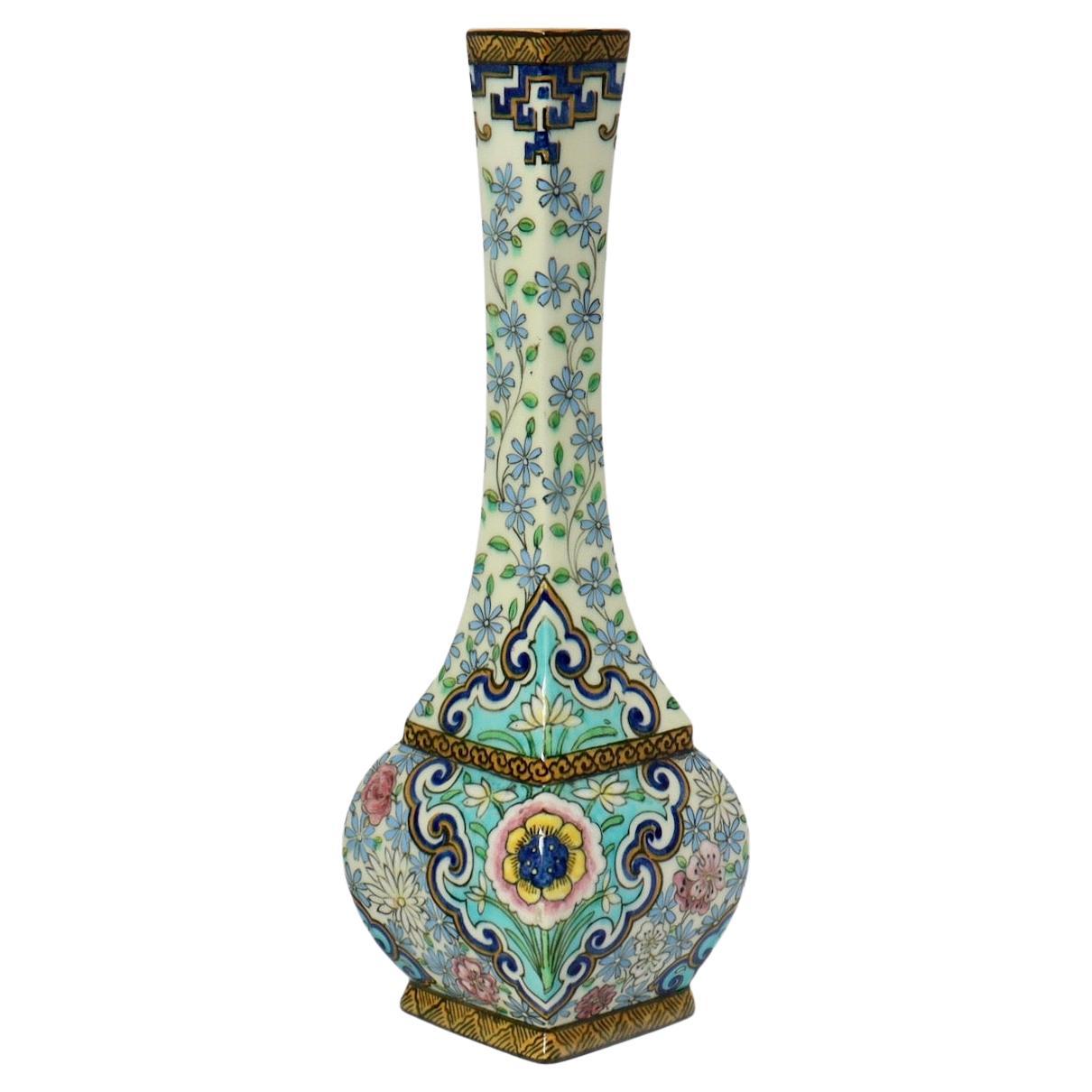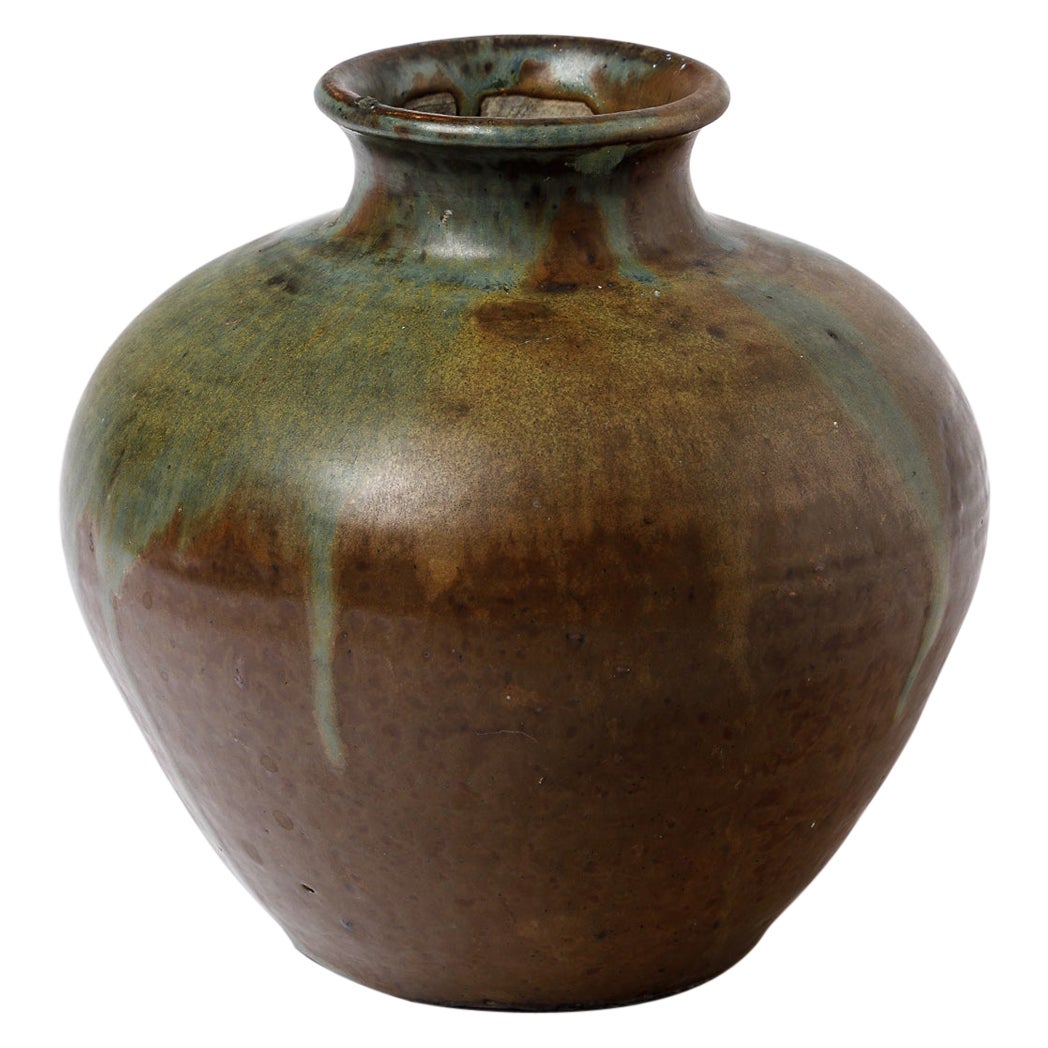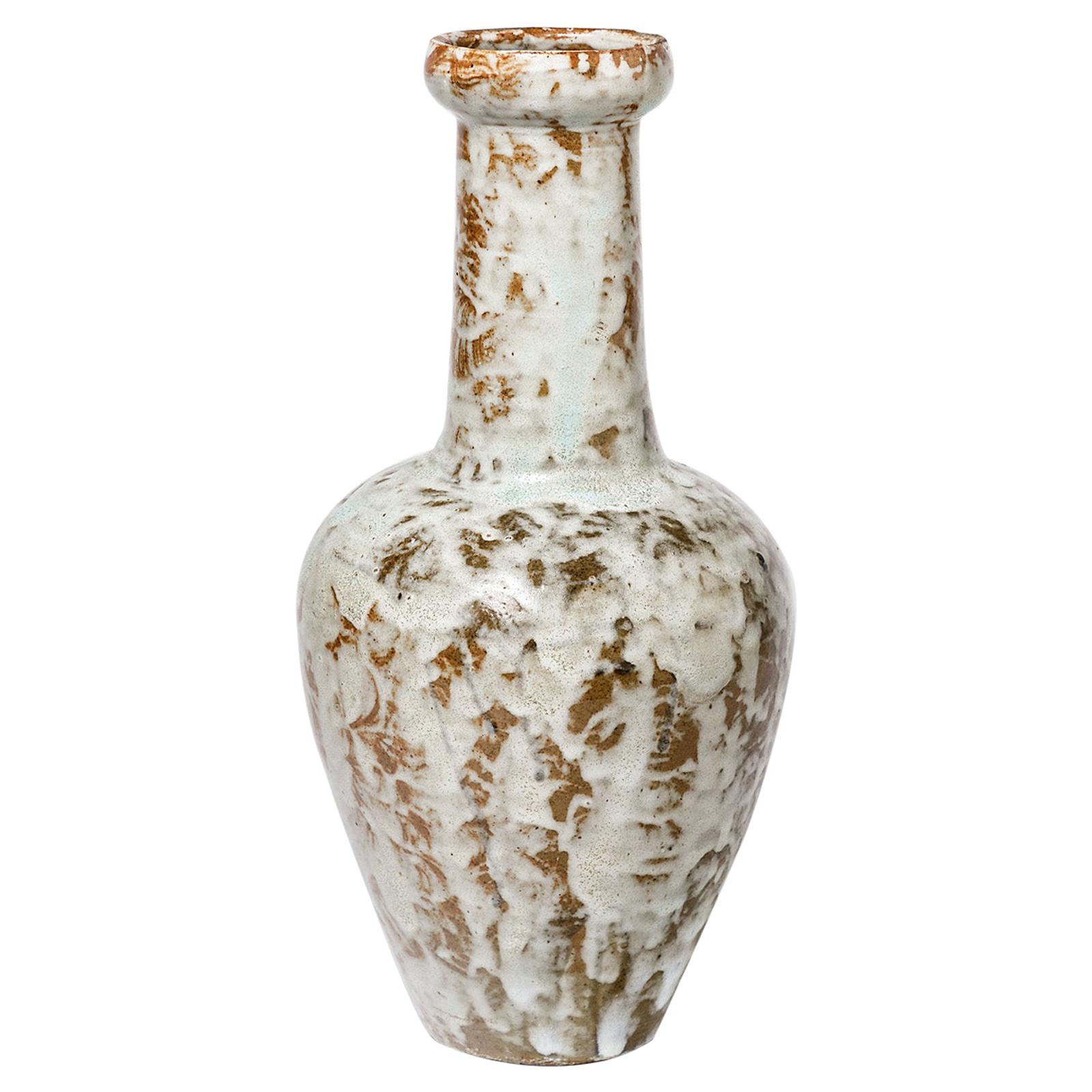Items Similar to Théodore Deck, Ceramic Vase, Signed, circa 1870
Want more images or videos?
Request additional images or videos from the seller
1 of 11
Théodore Deck, Ceramic Vase, Signed, circa 1870
About the Item
Théodore Deck (1823-1891), ceramic vase, signed, circa 1870.
- Creator:Theodore Deck (Designer)
- Dimensions:Height: 7.09 in (18 cm)Diameter: 3.94 in (10 cm)
- Style:Art Nouveau (Of the Period)
- Materials and Techniques:
- Place of Origin:
- Period:
- Date of Manufacture:circa 1870
- Condition:Wear consistent with age and use.
- Seller Location:Saint-Ouen, FR
- Reference Number:1stDibs: LU1705230673252
About the Seller
4.9
Vetted Seller
These experienced sellers undergo a comprehensive evaluation by our team of in-house experts.
Established in 1995
1stDibs seller since 2015
473 sales on 1stDibs
Typical response time: 3 hours
- ShippingRetrieving quote...Ships From: Mouscron, France
- Return PolicyThis item cannot be returned.
More From This SellerView All
- Accolay Vase, circa 1960By Accolay PotteryLocated in Saint-Ouen, FRAccolay vase, circa 1960.Category
Vintage 1960s French Mid-Century Modern Vases
MaterialsCeramic
- Accolay Vase, circa 1960 the Color is Pink / BrownBy Accolay PotteryLocated in Saint-Ouen, FRAccolay vase, circa 1960 the color is pink / brown.Category
Vintage 1960s French Mid-Century Modern Vases
MaterialsCeramic
- Clement Massier, Art Nouveau Flower Spike, Vallauris, circa 1900By Clement Massier, VallaurisLocated in Saint-Ouen, FRClement Massier, art nouveau flower spike, Vallauris circa 1900.Category
Antique Late 19th Century French Art Nouveau Ceramics
MaterialsCeramic
- small ceramic vase, signed LEIA, circa 1970Located in Saint-Ouen, FRsmall ceramic vase, signed LEIA, circa 1970Category
Vintage 1970s Mid-Century Modern Vases
MaterialsCeramic
- Rare and Original Ceramic Bottle, Signed and Located in Vallauris, circa 1950/19By Roger CapronLocated in Saint-Ouen, FRRare and original ceramic bottle, signed and located in Vallauris, circa 1950/1960.Category
Vintage 1950s French Mid-Century Modern Ceramics
MaterialsCeramic
- Cerdazur, Monaco Large Ceramic Vase, circa 1950, SignedBy VallaurisLocated in Saint-Ouen, FRCerdazur, Monaco large ceramic vase, signed. Cerdazur Monaco et daté 1967.Category
Vintage 1960s French Mid-Century Modern Vases
MaterialsCeramic
You May Also Like
- Théodore Deck (1823-1891), Miniature Pair of Faience Vases circa 1870By Theodore DeckLocated in Saint-Ouen, FRTheodore Deck (1823-1891) A deep green enameled faience miniature pair of vases molded in the Chinese Archaistic Taste. Coves in the shape of elepha...Category
Antique 1870s French Chinoiserie Vases
MaterialsFaience
- Pair of Theodore Deck VasesBy Theodore DeckLocated in Saverne, Grand EstExtremely rare pair of Gu-shaped turquoise enamelled ceramic vases, carried by elephants and resting on an openwork base ending in four flared feet. Some lack of enamel otherwise ver...Category
Antique 1880s French Japonisme Vases
MaterialsCeramic
- A Théodore Deck (1823-1891) Enamelled Faience Soliflore Vase circa 1875By Theodore DeckLocated in Saint-Ouen, FRThéodore DECK (1823-1891) A polychromatic enamelled earthenware soliflore and quadrangular shape vase with Sino-Japanese inspiration design of flowers and geometrical friezes all around. Impressed uppercase mark "TH.DECK" under the base. Circa 1875 Born in Guebwiller in Alsace, Théodore Deck trained as a ceramist in his home region, then in Germany. He went into partnership with his brother, Xavier Deck, to create his own factory in Paris in 1858. At the Exhibition of Industrial Arts in 1864, he presented pieces covered with transparent enamels that were not cracked, and then made his first attempts at reliefs under transparent enamels. He developed a bright turquoise color, famously renowned as "Bleu Deck". It is this nuance that we find on the salamander represented on this vase. In 1887 he published a treatise entitled "La Faïence", in which he explained some of his discoveries. That same year, he became director of the Manufacture de Sèvres. Theodore Deck (1823-1891) is a French ceramist born in Guebwiller in Alsace. He is passionate about chemistry and the physical sciences. In 1841, he joined the master stove maker Hügelin father as an apprentice in Strasbourg. In two years, he learned of the methods inherited from the 16th century, such as the encrustation of colored pastes in the style of Saint-Porchaire. This apprenticeship did not prevent him from spending his free time draw-ing or modeling clay in the studio of sculptor André Friederich. Escaping military service, he made a tour of Germany as is the tradition with fellow Alsatian stove-makers. The quality of his work allows him to obtain important orders in Austria for the castles of the provinces and the imperial palaces, in particular for the palace of Schönbrunn. He continues his journey in Hungary to Pest, to Prague, then, going north through Dresden, Leipzig, Berlin and Hamburg. On the strength of his apprenticeship, he arrived in Paris in 1847. Recommended by Hügelin, he went to the stove factory of the Bavarian potter Vogt, located rue de la Roquette. The Revolution of 1848 interrupts production and Deck decides to return to his hometown. His family then advised him to set up a small terracotta workshop: he made a few busts, statuettes, vases, lamps and copies of famous antiques there. Aware that this situation would not allow him to provide for himself properly, he returned to Paris in 1851 where he was employed by the widow Dumas, daughter of the earthenware maker Vogt for whom he had worked. Hired as a foreman, he supplied the drawings and models to the workers, while working the land himself. The following year, he made the decision to settle not far from his former employer at 20, rue de la Fontaine-au-Roi, probably using his ovens. His brother, Xavier Deck, joins him. It was officially in 1858 that the Deck brothers created their business and settled in Paris at 46, boulevard Saint-Jacques. Initially, the brothers only carry out coatings for stoves. But the business is going so well that barely a year after their installation, they want to diversify their production and engage in ceramics for the cladding of buildings as well as in shaped parts. Deck is interested in politics. In 1870, he opted for French nationality and was elect-ed deputy mayor in the 15th arrondissement of Paris. In 1861, at the Salon des arts et industries de Paris, which was held on the Champs-Élysées, Théodore Deck exhibited his works for the first time: these were pieces with an inlay decoration called “Henri II” and others. pieces covered with turquoise blue enamel or decoration in the style of Iznik ceramics.If he wins a silver medal, reviews are mixed, however. The following year, on the occasion of the Universal Exhibition of 1862 in London, he won over English customers. He surprised by presenting, like the previous year, his Alhambra Vase...Category
Antique 1870s French Japonisme Vases
MaterialsFaience
- Ceramic Vase with White Glaze Decoration, Signed Lion, circa 1920-1930By Eugène LionLocated in Saint-Ouen, FRA ceramic vase with white glaze decoration. Perfect original conditions. Signed "Lion" under the base, circa 1920-1930.Category
20th Century French Art Deco Vases
MaterialsCeramic
- Ceramic Vase with White Glaze Decoration, Signed Lion, circa 1920-1930By Eugène LionLocated in Saint-Ouen, FRA ceramic vase with white glaze decoration. Perfect original conditions. Signed "Lion" under the base, circa 1920-1930.Category
20th Century French Art Deco Vases
MaterialsCeramic
- Ceramic Vase with White Glaze Decoration, Signed Lion, circa 1920-1930By Eugène LionLocated in Saint-Ouen, FRA ceramic vase with white glaze decoration. Perfect original conditions. Signed "Lion" under the base, circa 1920-1930.Category
20th Century French Art Deco Vases
MaterialsCeramic
Recently Viewed
View AllMore Ways To Browse
Antique Ceramic Vases
Antique Ceramic Vase
Ceramic Antique Vases
Ceramic Antique Vase
Ceramic Vase Antique
Antique Ceramic Signs
French Art Nouveau Ceramic
Deck Theodore
Tonala Pottery Bird
Antique Crock 3
Mexican Vintage Tonala Pottery Hand Painted Birds
Mocha Yellow Ware
Vintage Italian Majolica Pottery
Cobalt Crocks
Georgian Folk Art Pottery
Antique Crock Cobalt
Antique Crock 2
Aurelio Flores
